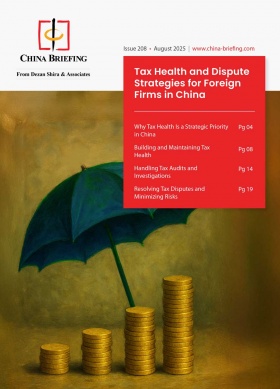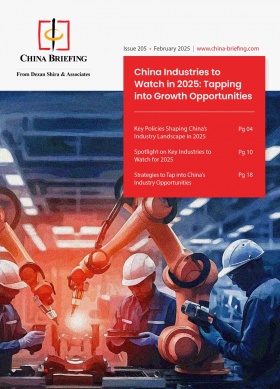What Warming China-India Relations Mean for Businesses in 2025
In 2025, China and India are pursuing a cautious but meaningful reset in relations, balancing strategic competition with pragmatic cooperation. Beyond trade facilitation and investment, the thaw signals potential alignment in regional supply chains, infrastructure, and energy security.
For Chinese and Indian businesses, the thaw creates new openings to expand market access, deepen cross-border partnerships, and may attract joint investment in sectors ranging from manufacturing and digital services to green technology.
For multinational firms, this evolving dynamic opens opportunities to position India as a complementary base to China while adapting to shifting tariffs, regulatory frameworks, and technology-security concerns.
On August 31, 2025, Chinese President Xi Jinping and Indian Prime Minister Narendra Modi met in Tianjin on the sidelines of the Shanghai Cooperation Organization (SCO) summit, marking Modi’s first visit to China in seven years. The two leaders emphasized that China and India should be viewed as partners in development rather than rivals, signaling a shift toward stabilizing relations and exploring avenues for deeper economic cooperation.
The meeting comes at a critical moment, following the stabilization of the long-disputed Himalayan border and just days after the United States imposed a 50 percent tariff on Indian exports. Against this backdrop, both countries are recalibrating their strategies to mitigate external pressures and strengthen bilateral engagement. Trade and investment were central to the discussions, with Modi highlighting India’s trade deficit with China and Xi underscoring the need to prioritize development as the foundation of the relationship.
The key question for businesses remains whether this symbolism will translate into reduced barriers and risks for trade and investment. To explore this further, in this article, we examine the evolving trajectory of China-India economic relations in 2025, assessing the prospects for bilateral trade and investment, and considering the implications for foreign firms and global supply chains.
The state of play: China-India relations in 2025
After years of strained ties following the 2020 Galwan Valley clash, 2025 has seen the most significant reset in China–India relations in half a decade. Developments have unfolded in a careful sequence, suggesting not a single breakthrough but a steady thaw shaped by shifting global dynamics, especially the deterioration of India-US trade relations under the Trump administration.
Early overtures: March-June 2025
In May, regional tensions briefly spiked following a short conflict between India and Pakistan, highlighting the fragility of security dynamics in South Asia. The episode underscored for India the importance of maintaining diversified partnerships and stable trade relationships.
By June, Modi’s government began actively pursuing a recalibration of ties with China, coinciding with increasing challenges in trade negotiations with the US.
Trade and investment signals: Mid-2025
From June onwards, tangible moves followed. China eased export curbs on critical goods for India, including urea shipments, rare earths, fertilisers, and tunnel-boring machines, offering immediate relief to Indian industries in manufacturing, agriculture, and infrastructure. At the same time, India authorised the resumption of tourist visas for Chinese nationals after years of restrictions, signalling a willingness to reopen people-to-people channels.
Reports also surfaced of potential high-level corporate cooperation, such as Adani Group exploring a tie-up with Chinese EV giant BYD to manufacture batteries in India: an indication that private sector players were preparing to test the waters of the thaw.
Diplomatic normalization: August 2025
Momentum accelerated with Chinese Foreign Minister Wang Yi’s two-day visit to New Delhi, between August 18-19. This marked the resumption of high-level dialogue after three years, with Wang co-chairing the 24th round of boundary talks alongside National Security Advisor Ajit Doval.
The visit produced concrete outcomes, including agreement to:
- Resume direct passenger flights;
- Reopen three designated border trade passes (Lipulekh, Shipki La, and Nathu La);
- Facilitate visas and pilgrimage routes; and
- Deepen economic engagement.
In the same occasion, Wang also met with Modi, conveying Xi’s invitation to the SCO summit in Tianjin and highlighting the importance of “stable, predictable, and constructive” ties.
The Tianjin SCO summit: August 30–31, 2025
These preparatory steps culminated in Modi’s first visit to China in seven years, where he met Xi on the sidelines of the SCO summit in Tianjin. Both leaders emphasized the need to move beyond border frictions and focus on economic cooperation, with Xi reiterating that the two countries should be seen as partners in development rather than rivals. Modi, for his part, underlined that “differences should not turn into disputes” and signalled India’s commitment to progressing ties based on “mutual respect, trust, and sensitivities.”
Why the reset matters now
The warming China-India tie stood out for its strategic timing. Coming amid a period of heightened global trade uncertainty, it underscored the practical incentives for India and China to explore closer economic engagement, from trade facilitation to investment opportunities, at a moment when both countries are reassessing their external partnerships. Rather than a single diplomatic breakthrough, 2025 reflects a deliberate and layered recalibration. For India, the Trump tariffs created economic urgency to diversify partnerships and reduce overdependence on the US market. For China, facing intensifying Western scrutiny, stabilising relations with India reduces regional vulnerabilities and unlocks opportunities in sectors ranging from infrastructure to clean energy.
What the warming China–India ties mean for businesses and global supply chains
Business implications
The gradual stabilization of China–India relations in 2025 has started to reshape the operating environment for companies on both sides. For years, political tensions introduced uncertainty that limited cooperation, particularly in sensitive sectors such as clean energy and technology. The recent warming has lowered these barriers, creating new space for commercial partnerships, market entry, and cross-border supply chain integration.
1. New energy as a strategic cooperation frontier
India’s rapid growth in renewable energy is intersecting with China’s competitive advantages in technology, scale, and cost efficiency. Large Indian conglomerates (including Adani, Reliance, and JSW) are now more willing to pursue joint ventures and licensing deals with Chinese battery giants like CATL and BYD. Areas of cooperation range from battery manufacturing and storage technology to components such as extrusion machinery and advanced recycling lines. For Chinese firms, improved bilateral relations translate into greater confidence in accessing India’s 1.4 billion-consumer market, while Indian partners gain faster and more reliable access to advanced technologies critical for electrification and decarbonization.
2. Traditional industries reinforcing supply chain stability
The reset will also help conventional sectors where trade had previously been disrupted. In fertilizers, China has resumed shipments of two million tons to India, directly addressing shortages caused by India’s aging domestic facilities and volatile gas supplies.
This step both secures farm inputs for India, where urea sales rose 6.4 percent in FY2025, and provides Chinese producers with a stable outlet for surplus capacity. Machinery trade is following a similar trajectory: Chinese plastics machinery exports to India expanded from RMB 1.77 billion (US$248.14 million) in 2021 to RMB 4.05 billion (US$567.79) in 2024, with 2025 volumes already surpassing 2021 levels by midyear. India, the world’s third-largest plastics consumer with annual growth above six percent, remains heavily reliant on Chinese machinery, raw materials, and recycling technologies. A more predictable political environment allows both sides to deepen these supply chain linkages.
3. Technology and talent collaboration enabling industrial upgrading
Beyond traditional trade, warming ties are expected to accelerate cooperation in semiconductors, agri-tech, and research. The newly launched “China–India Semiconductor Supply Chain Alliance” is facilitating chip exports from Chinese foundries to India for use in agricultural IoT devices and irrigation systems. Parallel initiatives in agri-tech, such as joint R&D on drought-resistant soybean strains in Maharashtra, show how bilateral technology transfer is supporting India’s productivity goals while creating new markets for Chinese innovation. Eased political sensitivities mean Indian stakeholders are more open to Chinese participation in strategic technology projects, reducing overreliance on US and EU suppliers and expanding bilateral talent exchanges.
4. Market access improvements lowering barriers for multinationals
Policy adjustments have made it easier for firms to operate across both markets. India has reinstated tourist visas for Chinese nationals and introduced long-term multiple-entry business visas for senior executives. The planned resumption of direct flights between Beijing/Shanghai and Mumbai/Delhi from September 2025 will restore air cargo capacity and shorten lead times. Meanwhile, streamlined customs procedures for cross-border e-commerce have cut logistics costs in plastics and raw materials trade by 15 percent and shortened delivery cycles by 30 percent. For multinational companies, these measures reduce overheads, improve managerial oversight, and enhance the attractiveness of using India and China in tandem within regional strategies.
Implications on global supply chain implications
The warming of China–India relations is not only a bilateral development; it carries systemic implications for global supply chains at a time of heightened fragmentation risk.
1. Lowering concentration risks and “chain-break” vulnerabilities
Stable China–India trade flows reduce the reliance of global supply chains on single markets such as the US. India’s growing imports of Chinese fertilizers, machinery, and rare earths, coupled with China’s demand for Indian IT services, pharmaceuticals, and agricultural products, create a mutually reinforcing trade loop. This reciprocity helps cushion both sides—and their partners—against sudden disruptions triggered by trade disputes or geopolitical crises.
2. Strengthening Asia’s manufacturing competitiveness
As two of the world’s largest economies integrate supply chains more closely, regional production networks across Asia stand to benefit. Cooperation in electric vehicles, batteries, and plastics is laying the groundwork for a more resilient Asian manufacturing ecosystem under frameworks such as the Belt and Road Initiative and RCEP. With Asia already accounting for over half of global manufacturing output, deeper China–India integration enhances cost efficiency, innovation, and scale advantages available to global firms sourcing from the region.
3. Accelerating diversification away from single-market dependence
Trade tensions with the US, including the recent 50 percent tariff hikes on Indian exports, are accelerating India’s pursuit of alternative partnerships. By engaging Chinese suppliers of raw materials, engineering plastics, and technology inputs, Indian firms such as JSW and Reliance are mitigating overreliance on developed markets. At the same time, Chinese companies like CATL and BYD are expanding their footprint in India to hedge against risks in their domestic market. This mutual diversification enhances supply chain resilience and broadens the options available to multinational companies seeking to “China+1” their production strategies.
4. Enhancing efficiency through technological and resource complementarity
China’s strengths in advanced manufacturing and materials are increasingly complementing India’s capabilities in pharmaceuticals, IT, and agriculture. For example, linking China’s dominance in rare-earth processing (60 percent of global output and 85 percent of refining capacity) with India’s position as the third-largest holder of reserves creates efficiencies in critical mineral supply chains. Similarly, combining Chinese smart-agriculture technologies with India’s agricultural resources boosts yields while reducing costs. These complementarities improve both resilience and efficiency in global supply networks, making them more competitive on a worldwide scale.
Strategic significance
Ultimately, the warming of China–India ties is more than a bilateral rapprochement. For businesses, it opens market access, accelerates technology transfer, and creates a more predictable operating environment. For global supply chains, it strengthens resilience, reduces single-market dependency, and enhances efficiency through complementarities. While strategic rivalry between Beijing and New Delhi remains, the current recalibration signals that pragmatism is prevailing in areas where commercial and developmental interests align.
Challenges and what to watch next
Despite warming ties, doing business between China and India remains complex.
Potential challenges include:
- Tariffs, non-tariff barriers, and regulatory opacity: Trade between India and China continues to be shaped by both tariffs and non-tariff barriers. While India has been actively seeking to expand economic engagement with China, certain regulatory measures (such as import restrictions, licensing requirements, and inspection protocols) remain in place and can affect market access. For example, some specialty chemicals, rare-earth inputs, and pharmaceutical ingredients require specific approvals or certifications, which can create delays for importers and manufacturers. Companies operating in sectors like electronics, chemicals, and pharmaceuticals must navigate these requirements carefully, anticipating procedural hurdles and compliance obligations when sourcing from or exporting to China.
- Sudden reversals in policy: Chin-India trade and investment can be affected by rapid changes in regulations or government directives. For instance, adjustments to tariffs, export controls, or licensing requirements can be announced with limited lead time, creating operational uncertainty for companies with cross-border supply chains. Firms engaging in manufacturing, technology, or logistics between the two countries must remain agile, monitoring policy updates closely to anticipate shifts that could impact sourcing, market access, or investment plans. Scenario planning and flexible supply-chain strategies are essential to mitigate the risks of such sudden regulatory changes.
- Security and tech considerations: Security considerations continue to shape trade and technology collaborations between China and India. Restrictions on certain Chinese telecom equipment, such as 5G hardware, and ongoing limits on apps like TikTok reflect heightened scrutiny of data privacy and cybersecurity standards. For businesses, these measures translate into compliance requirements, approval processes, and potential delays when engaging in cross-border technology ventures. Companies operating in sectors such as telecom, digital services, or electronics must carefully assess regulatory obligations, ensure secure handling of sensitive data, and plan for alternative suppliers or partnerships to maintain operational continuity while leveraging opportunities in both markets.
Accordingly, for the next 12–18 months, investors should focus on policy signals and institutional developments that will shape the business environment:
- Tariff and regulatory adjustments: Any moves by China or India to lower tariffs or streamline non-tariff barriers in electronics, chemicals, green technology, or machinery will directly impact cost structures and supply-chain efficiency.
- Cross-border collaboration rules: Licensing frameworks, technology-transfer approvals, and permissions for joint ventures will determine which partnerships can scale. Watch for clarity on sensitive sectors like digital services, telecom, and advanced manufacturing.
- Bilateral economic frameworks: Renewed momentum on stalled initiatives, such as the China–India FTA discussions or investment facilitation agreements, could signal a more predictable environment for capital flows and long-term projects.
- Infrastructure and connectivity initiatives: Joint commitments to logistics corridors, digital infrastructure, or energy projects would enhance market access and reduce friction for companies active in both economies.
In short, businesses should monitor how policy reforms and institutional commitments translate into tangible outcomes. Those that combine careful compliance with flexible, forward-looking strategies will be best placed to seize opportunities in the evolving China–India commercial relationship.
About Us
China Briefing is one of five regional Asia Briefing publications, supported by Dezan Shira & Associates. For a complimentary subscription to China Briefing’s content products, please click here.
Dezan Shira & Associates assists foreign investors into China and has done so since 1992 through offices in Beijing, Tianjin, Dalian, Qingdao, Shanghai, Hangzhou, Ningbo, Suzhou, Guangzhou, Haikou, Zhongshan, Shenzhen, and Hong Kong. We also have offices in Vietnam, Indonesia, Singapore, United States, Germany, Italy, India, and Dubai (UAE) and partner firms assisting foreign investors in The Philippines, Malaysia, Thailand, Bangladesh, and Australia. For assistance in China, please contact the firm at china@dezshira.com or visit our website at www.dezshira.com.
- Previous Article China Monthly Tax Brief: August 2025
- Next Article







